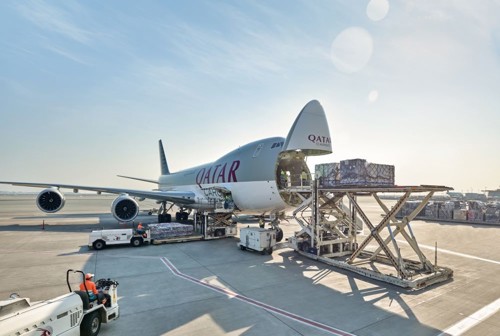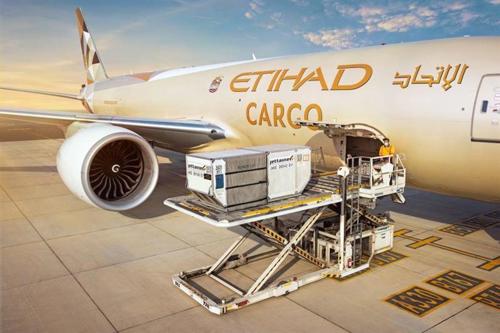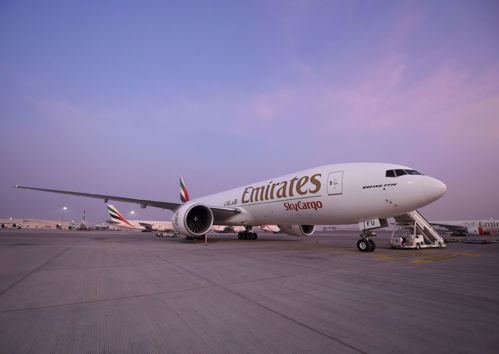
In 2021, air cargo was driven by a balance of strong demand and supply chain challenges caused by a lack of capacity, says Guillaume Halleux, Chief Officer Cargo at Qatar Airways. Capacity only started returning slowly in late 2021 as passenger traffic recovered and 2022 was the year of recovery as capacity returned to serve passenger markets, which opened up again.
Uncertainty surrounding the market and global airfreight remained, meaning agility and flexibility were the keys to success.
Halleux says, “The overall inflation surges around the world as well as the spread of the Omicron coronavirus variant, fuel prices and the geopolitical struggles in Europe, all impacted the second half of 2022, where the world experienced a reduction in new orders, and this is a leading indicator of cargo demand and world trade.”
There was much to be proud of in 2022, when the airline transported more than 1.7 million tonnes of cargo. The Next Generation was applied to the business, enhancing services and operations. The Digital Lounge was introduced to offer a more connected and improved e-booking system as part of Qatar Airways Cargo’s omni-channel strategy where customers have access to the booking platforms WebCargo, CargoAi and cargo.one.
Other highlights include earning CEIV Lithium Batteries certification, ordering Boeing 777-8 Freighters, providing cargo capacity for FIFA-related projects for the FIFA World Cup Qatar 2022, new regional freighter services, more offline stations, developing relationships with ACMI providers and partnering with airlines for block space agreements.
Halleux says, “What is certain is that 2022 has been a year of opportunities and we are proud of the results. Our tagline “Moved by People” is engrained in every employee and all of these achievements would not have been possible without their dedication and hard work.”

Returning to normal
For Etihad Cargo, 2022 was an interesting year, building on momentum from the previous year as the business returned to pre-pandemic operations, says Vice President Commercial, Tim Isik. The pre-pandemic network continued to recover, new destinations were added and key routes benefited from increased frequencies.
Isik says, “We have continued to meet our delivery promises and collaborate with our partners and customers, and 2022 has seen Etihad Cargo build on the success we achieved in 2021.”
Sustainability and technology have been two key components as Etihad Cargo has enhanced its services. For sustainability, Etihad Cargo is working with IATA to co-develop a CO2 emissions calculator tool, which will provide a valuable proof of concept for the cargo component of the IATA CO2 Connect carbon calculator.
It is also the first Middle Eastern carrier to join TIACA’s BlueSky sustainability verification programme and is developing the first airline-specific passive temperature-controlled container for transporting pharmaceuticals, in partnership with B Medical Systems.
Technology and digitalisation are playing key roles in Etihad Cargo’s growth with investments in AI solutions to assist ground handlers in calculating cargo dimensions more efficiently.
Partnering with SPEEDCARGO, Etihad Cargo is trialling automated dimension and volume scanning to optimise efficiency and offload recovery. The online booking portal has been enhanced to make it more efficient and intuitive.
Isik says, “Following the roll-out of new updates, including an enhanced look-to-book feature, a dynamic newsfeed and personalised dashboards, bookings made via the portal have surged, increasing by 57%.”
2023 is going to present challenges as cargo volumes and revenue fall but Isik and the team at Etihad Cargo will work closely with partners and customers to turn the challenges into opportunities to enhance products and services.
“We will continue to focus on providing capacity on key routes and expanding our network and operations through a customer-centric approach,” he says.
Abu Dhabi is a geographically and business-friendly location, says Isik, making it a prime candidate for manufacturing, pharmaceuticals and other growth industries. During the pandemic, Etihad Cargo deployed passenger freighters on key routes to transport vaccines with its partners in the HOPE Consortium and aid on behalf of the UAE Government’s various aid programmes.
The importance of partnerships was highlighted during the pandemic with the HOPE Consortium partnering with Abu Dhabi Airports Company, Brussels Airport Company and Pharma.Aero to launch the Pharma Corridor 2.0, establishing pharma corridors between airports with cargo communities certified under the CEIV Pharma programme.
The emirate is welcoming of investments in facilities linked to the airport, such as Etihad Cargo’s new state-of-the-art cool chain facility, which expands cool chain storage capacity, capabilities and storage for pharmaceuticals.
Isik says, “The new facility also supports Abu Dhabi's objectives to become a life sciences and pharmaceutical hub, and we will continue to support the transportation of pharmaceuticals via our Abu Dhabi operations through our PharmaLife product.”

Learning about resilience
2022 was a volatile year and demonstrated the need for flexibility, says Guillaume Crozier, Senior Vice President for UAE Cargo at dnata.
Optimising throughput meant overall volumes could increase and dnata is supporting more multimodal connections, particularly sea-air links, with dnata improving transit times between the port and the airport to provide a seamless and reliable service.
Crozier says, “We learnt a lot about resilience through Covid-19 and consolidated our Business Continuity Plan as 2021 was very challenging operationally. We are now more confident in riding out the next major surprises that come our way.”
In 2022, dnata re-energised its entire cargo strategy, building on data and innovative solutions. Thinking about the supply chain vertically, and not just the airport and warehouse, dnata is thinking about the end-to-end process. Its ambitious digitisation plan was launched in 2021 and last year was spent preparing for the launch of OneCargo, which will be rolled out this year, automating key business and operational functions including safety and quality monitoring, reporting and ULD management with an integrated, cloud-based platform.
Crozier says, “AI-driven tools and analytics provide enhanced visibility on sales and business performance, allowing customers to match real-time demand with available capacity for maximum profitability. In addition, OneCargo eliminates all redundancies and manual check sheets, substantially improving operational efficiency.”
For 2023, Crozier expects the mix between sea and air products will change again but demand for sea-air logistical solutions to remain stable. With its newly launched enhanced blueprint, Crozier is confident that Dubai will remain the preferred sea-air hub.
A reduced elasticity between supply and demand is expected and yields are expected to normalise, so productivity gains will need to be worked on even further.
Crozier says, “That is where our digitisation and innovation plan will really become effective, because when you analyse the next five-year cycle, hopefully we will see an upturn once again. Differences will be made on technology, efficiency and value chain from a visibility track and trace viewpoint.”

Capacity in key markets
Demand was robust in 2022 and it has been good to experience a positive market upturn after a challenging year, says Nabil Sultan, Divisional Senior Vice President Cargo at Emirates.
Certain verticals and industries have been strong such as perishables, automotive and spare parts, and pharmaceutical shipments increased 17% due to shipping Covid vaccines and equipment, and other lifesaving medicine and equipment.
Sultan says, “Emirates SkyCargo’s services are backed by state-of-the-art infrastructure at our hub in Dubai, our modern aircraft fleet as well as the sector-specific transportation solutions that we have developed in close consultation with our customers. We expect to see more demand from customers for specialised solutions.”
Emirates SkyCargo is investing in its fleet by ordering new and converted freighters. The first two Boeing 777Fs arrived in May and June, and plans to convert six Boeing 777 passenger aircraft into freighters were added to the four planned conversions. In November, Emirates SkyCargo ordered five 777Fs, with the first two due to arrive in 2024 and the other three in 2025.
2023 will present challenges due to high inflation, energy prices and the strong US dollar. These impact the cost of doing business, consumer confidence and overall spend, admits Sultan, and like everyone else, Emirates SkyCargo is keeping a close eye on costs and is working closely with its suppliers.
Sultan says, “Broadly, we’re optimistic that demand for space on our bellyhold as well as freighters will hold strong going into 2023. China’s high rate of Covid-19 infections will no doubt have some impact on manufacturing and export in the first quarter of the year.”
The Gulf is not immune to the challenges facing aviation but it is in a good place, says Sultan, due to its geographic location and the investments that several countries are making in in the sector.
He adds, “As the saying goes, a rising tide lifts all boats. The increased investments and development activity in the Gulf markets will have a positive knock-on effect in the region, generating more opportunities for Emirates and other aviation players.”
This article was published in the February issue of Air Logistics International, click here to read the digital edition and click here to subscribe.
